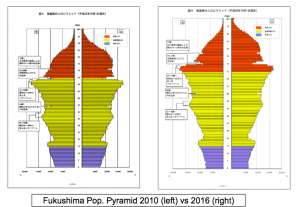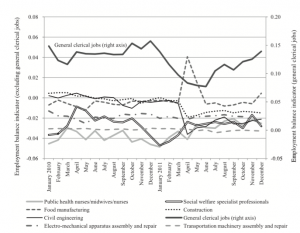Since the early ages of civilization, the undeniable presence of nature has shaped how humans interact with the natural environment. Humans have learned to adapt to the nature of the earth, and the 6,000 year history of human civilization is the testimony of that achievement. Despite the honed skill in adaptation to the natural environment, natural disasters cause major disturbances in people’s lives and impact them in socially, economically damaging ways as the space of origin is suddenly destroyed and made unaccessible, and the people living in that space involuntarily uprooted and relocated to distant ‘safe’ places. In a context of such extreme vulnerability and uncertainty of the natural force, how does a region or space re-orient itself to this change, and what impacts does this change have on the daily lives of humans? Specifically, how does relocation– the uprooting of populations out of their communities to other distant locations, impact the region and the individual on social and economic terms?
On March 11th, 2011, an earthquake of magnitude of 9.0 struck the Tohoku Region in North-Eastern Japan, impacting the Iwate, Miyagi, and Fukushima prefecture. This earthquake caused not only an earthquake, but induced a tsunami up to 9m high, and a nuclear meltdown at the Fukushima Daiichi plant that would be called the “Triple Disaster” and haunt the Japanese society for its complicated long standing impacts. While the earthquake in itself was one of the biggest earthquakes in recent history that was greatly destructive on its own, the tsunami and the following meltdown of the nuclear plant confirmed the severity of the disaster that now involved an invisible threat of the nuclear waste.
Amidst this chaos after the first phase of the natural disaster, one of the immediate priorities were to evacuate those people in threat of the nuclear power meltdown, out of the area. While the evacuation zones were established, where did the people actually go and what impacts did that removal of people from a space have on the economic structures?

Economic Impacts of Relocation in terms of Employment:
An economic impact due to relocation process caused by the natural disaster are labor issues. As the statistics show, while there has been a significantly high volume of emigration by the age groups of 15-19 and 20-24 from the Fukushima area. Basic economic sense making can tell us that this is critical for a region, as this impacts the dependency ratio in the region of an unproductive economy.
A research team led by Yoshio Higuchi from Keio University has studied this case in their publication The Impact of the Great East Japan Earthquake on the Labor Market and have identified further of a “employment mismatch” that causes a perpetual cycle of unemployment in the area. Their research reveals that while there is plentiful of job opportunity in the region, as well as there are a comparable number of unemployed people in the region, due to a “mismatch” with the skills and jobs that people would like to take on, the employment rate is still struggling.
This graph illustrates the “mismatch” indicator that was applied by Higuchi et al., on the regions impacted by the Triple Disaster. 
From the graph, while relative equal ratio of employment balance can is seen, the significant instability immediately after the disaster from March 2011 becomes obvious with work in Food Manufacturing, General clerical jobs, and Construction Work. There is a high number of applicants for food manufacturing, while the construction industry is seeing a critical shortage of labor. This inefficient allocation of labourers in the region is problematic for restoring stability in the region again.
Whether there is a net increase or decrease of migrants from a region post-disaster, the instability a disaster creates is undeniable. The impacts on demographic ratios in Fukushima caused a mismatch in employer to employee. In Sendai City, the World Bank Report indicates that the population movement is accelerating urbanization, and thus “population gaps between urban and rural areas are widening”. The uneven distribution of population between regions causes inefficiency and a overall a slowing of economic revitalization. To minimize these imbalances, the World Bank Report suggests government initiatives that can be taken to restore the stability, or to attract people from outside the prefecture. They suggest allocating some of the reconstruction budget towards public-private partnerships that will create new businesses that will allow the region to thrive once reconstruction is complete (114).